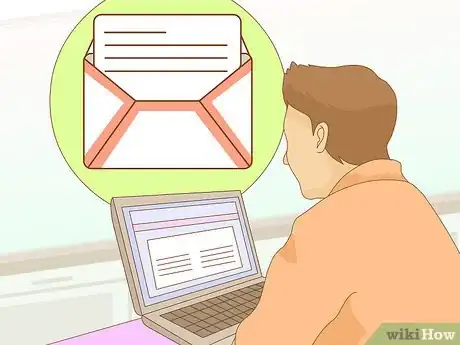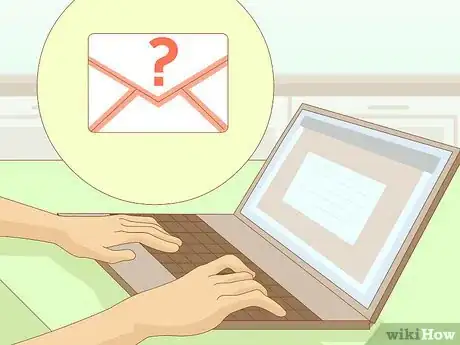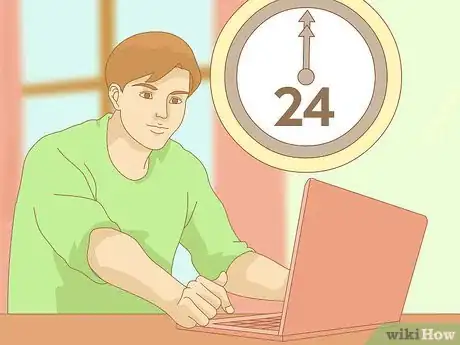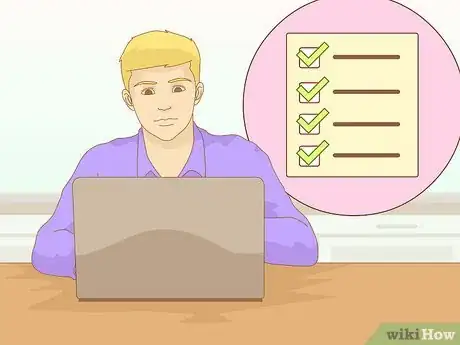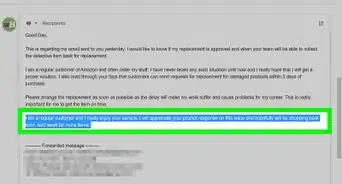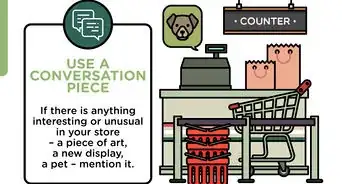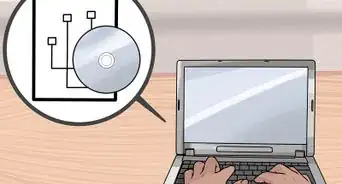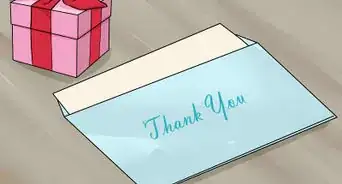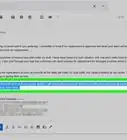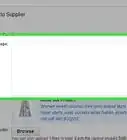This article was co-authored by wikiHow Staff. Our trained team of editors and researchers validate articles for accuracy and comprehensiveness. wikiHow's Content Management Team carefully monitors the work from our editorial staff to ensure that each article is backed by trusted research and meets our high quality standards.
This article has been viewed 62,140 times.
Learn more...
Answering customer emails is an important aspect of maintaining client loyalty and opening the door for future opportunities with those customers. In order to make the most of this particular type of communication exchange, it is important to make sure the response to each customer email indicates that the subject matter addressed in the original email was read carefully and that the answer is in direct response to the client's comments. Following a few simple steps will ensure the email does stay on topic and will meet the customer's approval.
Steps
Reading the Customer Email
-
1Read the customer's email carefully. Avoid the temptation to begin formulating a response before getting to the very last word in the correspondence. As you read the entire text, other insights may come to mind that will make it much easier to provide a truly constructive response.
-
2Acknowledge the customer email as quickly as possible. Let customers immediately know you care for and plan on investigating their concerns, there is personnel responsible for such actions, and a solution will be reached. Try a few of the following replies to personalize your own:
- At (business name), we are 100% committed to meeting the needs of our customers. One of our customer representatives will reply within 24-hours.
- In an effort to monitor and improve customer satisfaction at (business name), we would like to inform you we take all feedback seriously, and will reply to your concern as soon as possible.
- We appreciate your concern and hope to keep your future business. Please allow us some time to investigate your issue and determine a suitable solution.
- Whenever possible, go one step further and personally acknowledge the receipt. This is especially important if it will take time to gather the information necessary to adequately respond to customer queries, concerns, or suggestions.
Advertisement -
3Track all customer interaction. There are customer software packages that do this for you, but in general there should be a way to identify the customer, their contact information, and their specific complaint. Be sure to include enough information, like a unique ID number, in case the customer has more than one bad experience.
Interpret the Customer Concerns
-
1Put yourself in the customer’s position. Before determining who is at fault, what the reply should be, and what solution will be provided, try to really identify with the customer. Imagine previous scenarios where you’ve been unhappy with a business, and formulate the type of answer that would have satisfied you then.[1]
-
2Consider the questions or concerns in the client's email. At times, clients may be very direct, while at other times their words may hint at additional concerns. If there is question, do not guess at the client’s intentions.[2] Get clarification by asking a question.
-
3Make a list of specific issues. Sift through the email to remove the concerns from vitriol. Try to break down the email into three different sections.
- Identify what should be directly addressed. These items need immediate and concise answers.
- Pick out what needs further clarification. If there are uncertain demands or complaints, be sure to find the items that need return questions to the customer.
- Pay attention to any time-sensitive items. If a customer is unhappy with their service or product, and needs attention before a certain cut-off date, be aware of their scheduling concerns.
Answering the Customer Email
-
1Thank the customer for the email. When a customer takes the time to send an email, you are being given the opportunity to overcome obstacles and strengthen the relationship. Make it clear the customer is valuable and you will find a way to provide concise answers that solve their issues.
-
2Apologize for any wrong-doing. Sometimes all a customer wants is acknowledgement of an error, bad service provided, or an unsatisfactory product. Try one of the following to assuage the customer:
- Sorry for our mistake. We’ll work harder next time to make your experience wonderful.
- We’d like to offer our sincerest apologies. The same mistake will not be made again.
- Oops! We definitely didn’t live up to expectations with your last interaction. We’ll try to do better in future visits.
-
3Set reasonable expectations for responding with answers. Many companies have a policy of answering emails within 24 business hours or less. Make sure your client knows when a reply can reasonably be expected.
-
4Address each topic mentioned in the customer email. An easy way is to respond to each point in the same order as listed in the original email. This will often make it easier for the client to quickly relate the responses to his or her comments, since the flow of answers is in sync with the arrangement of the customer's text.
-
5Ask clarifying questions. Should any comment expressed by the client be unclear in some manner, pose questions designed to obtain more detail. Avoid phrasing your questions so that simple yes or no responses are likely. Ideally, you want enough detail in return to fully address any remaining issues on the client's mind.
- Can you please explain the customer service interactions with which you are unhappy?
- Which items did you purchase, and which are unsatisfactory?
- Would you please provide the details of the sales transaction, including the date, time, and sales ID number?
-
6Handle angry customers with care. Customers that are upset are unlikely to respond kindly to anything except acknowledgement and understanding of their complaint.
- The customer is always right. Under nearly all scenarios, it does not behoove you to blame the customer for a mistake. Chalk up any interactions like this as a way to win over a customer.
- Do not get into an argument with the customer via email. Keep attempting to resolve the situation by offering multiple solutions to the problem.
- Offer realistic answers. While some difficult customers may ask for unrealistic outcomes, it’s best not to even suggest something that can’t be delivered. Only mention what can be done to remedy the problem.[3]
-
7Offer solutions without excuses. Even if a client wants something that cannot be done, don't respond negatively. Include what solutions are available to address the underlying issue, especially if the fault is with your company. Ultimately, clients are more interested in what providers can do rather than what they can't.
- Thanks for the email. We’ve found the source of the error and are would like to recompense you with 15% off of your previous order.
- We appreciate the time you’ve spent to contact us. We’d like to offer you a full refund on the faulty product. Thank you for your business!
- Sorry for shipping the incorrect item to you. We’ve already sent a replacement via overnight shipping. Please consider the first item a gift.
- Your email has brought attention to a problem of which we were unaware. Thank you. Please use the attached coupon and accept a complimentary meal on your next visit.
- Ask the customer for suggestions. They may find your solution insufficient. Provided the request is reasonable, it’s possible you’ll gain a valued customer by allowing them to dictate their own terms.[4]
-
8Monitor follow-up correspondence with the customer. Ensure your company follows through with the solution provided, and the customer is satisfied. Never leave an issue unresolved.[5]
References
- ↑ http://smallbusiness.intuit.com/news/Customer-satisfaction-&-retention/19152164/Responding-to-Customer-Complaints.jsp
- ↑ http://www.babson.edu/offices-services/human-resources/employment/students/policies/Pages/student-employee-policies.aspx
- ↑ http://www.babson.edu/offices-services/human-resources/employment/students/policies/Pages/student-employee-policies.aspx
- ↑ http://smallbusiness.intuit.com/news/Customer-satisfaction-&-retention/19152164/Responding-to-Customer-Complaints.jsp
- ↑ https://www.entrepreneur.com/article/231399
About This Article
The best way to answer angry customer emails is to start with a thank you, even if they're being rude. Thanking them for their feedback is a quick way to make the customer feel valued, and may cool their anger slightly. Then, address each topic mentioned in the customer’s email and apologize for any errors, bad service, or wrong-doing they experienced. Sometimes all a customer want to hear is an acknowledgment, so try using a phrase like “We’d like to offer our sincerest apologies. The same mistake will not be made again.” If you need more information in order to find a realistic solution, ask them to clarify their original feedback. For more tips on handling irate customer emails, including how to put yourself in the customer’s position, read on!
